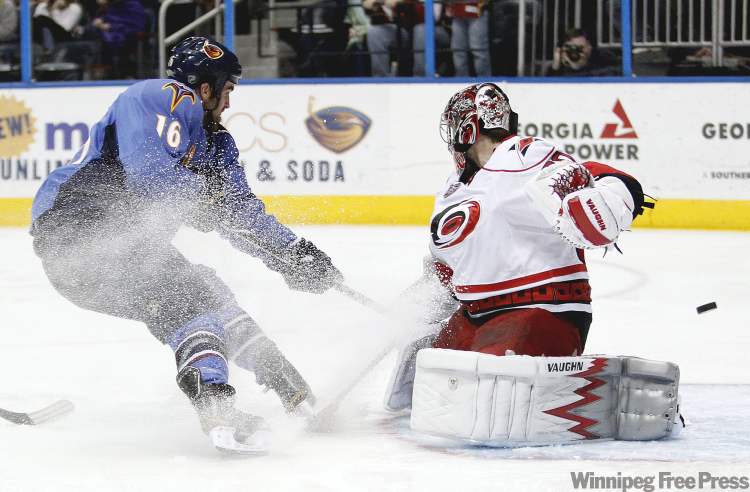Jets fans already free agency critics
But club's quiet opening moves aren't end of story
Advertisement
Read this article for free:
or
Already have an account? Log in here »
To continue reading, please subscribe:
Monthly Digital Subscription
$0 for the first 4 weeks*
- Enjoy unlimited reading on winnipegfreepress.com
- Read the E-Edition, our digital replica newspaper
- Access News Break, our award-winning app
- Play interactive puzzles
*No charge for 4 weeks then price increases to the regular rate of $19.00 plus GST every four weeks. Offer available to new and qualified returning subscribers only. Cancel any time.
Monthly Digital Subscription
$4.75/week*
- Enjoy unlimited reading on winnipegfreepress.com
- Read the E-Edition, our digital replica newspaper
- Access News Break, our award-winning app
- Play interactive puzzles
*Billed as $19 plus GST every four weeks. Cancel any time.
To continue reading, please subscribe:
Add Free Press access to your Brandon Sun subscription for only an additional
$1 for the first 4 weeks*
*Your next subscription payment will increase by $1.00 and you will be charged $16.99 plus GST for four weeks. After four weeks, your payment will increase to $23.99 plus GST every four weeks.
Read unlimited articles for free today:
or
Already have an account? Log in here »
Hey there, time traveller!
This article was published 05/07/2011 (5244 days ago), so information in it may no longer be current.
Maybe the Winnipeg Jets brass saw this coming.
The euphoria of the NHL’s return is still in full roar, but after the big announcement on May 31, the introduction of the hockey department staff, the unveiling of the Jets team name and the excitement surrounding the first names called in the entry draft, comes this:
Complaints from some fans about a quiet initial foray into free agency that netted six players, three of whom spent last year in the AHL and none of whom will carry the goal-scoring credentials of an Anders Hedberg, Teemu Selanne, Dale Hawerhcuk or Morris Lukowich.

There’s even some suggestion that unless they get off their keisters and start spending, the Jets may have trouble meeting the NHL’s salary-cap floor of $48.3 million, let alone being a mid-cap team, as previously outlined by the ownership. According to capgeek.com, the Jets are now ranked 28th in team payroll at $39.2 million.
Jets management opted not to comment, stating that free agency has just begun and the roster is far from being set for 2011-12.
So consider these counter-arguments before dooming the team’s spending strategy:
— Three restricted free agents — captain Andrew Ladd, defenceman Zach Bogosian and winger Blake Wheeler — are all due raises. The Hockey News recently speculated Ladd would be worth around $4 million to $5 million, Bogosian and Wheeler about $3 million or about a combined $6-million jump in salary. Couple that with the other restricted free agents who were made qualifying offers — defencemen Arturs Kulda and Brett Festerling, right-winger Spencer Machacek and centres Ben Maxwell and Riley Holzapfel — and those moves alone could bring the team to the salary-cap floor.
— Also, with such a young talent base, it’s important to remember that rising stars Evander Kane and Ondrej Pavelec become restricted free agents next year, Alex Burmistrov, Bryan Little and Patrice Cormier the year after that, and all could be in line for big raises. Keeping that core intact is going to cost this summer and beyond.

— There are still some name unrestricted and restricted free agents on the open market that the Jets are believed to be interested in signing.
— Finally, this might be the most important factor in the Jets’ approach to free agency: The franchise clearly isn’t comfortable with signing players to long-term deals that could handcuff them in the future.
Case in point: Of the 17 players signed to four-year or longer deals since July 1 by rival NHL teams, eight — Brad Richards, Ilya Bryzgalov, Kevin Bieksa, Alex Tanguay, Erik Cole, Jan Hejda, Ed Jovanovski and Joel Ward — were 30 or older.
That’s a whole lot of coin tied up in players who, in some cases, will be close to 40 when their deals are finished and for others who would best be described as average NHLers — even if the cap hit is relatively low at the contract’s expiration.
ed.tait@freepress.mb.ca






